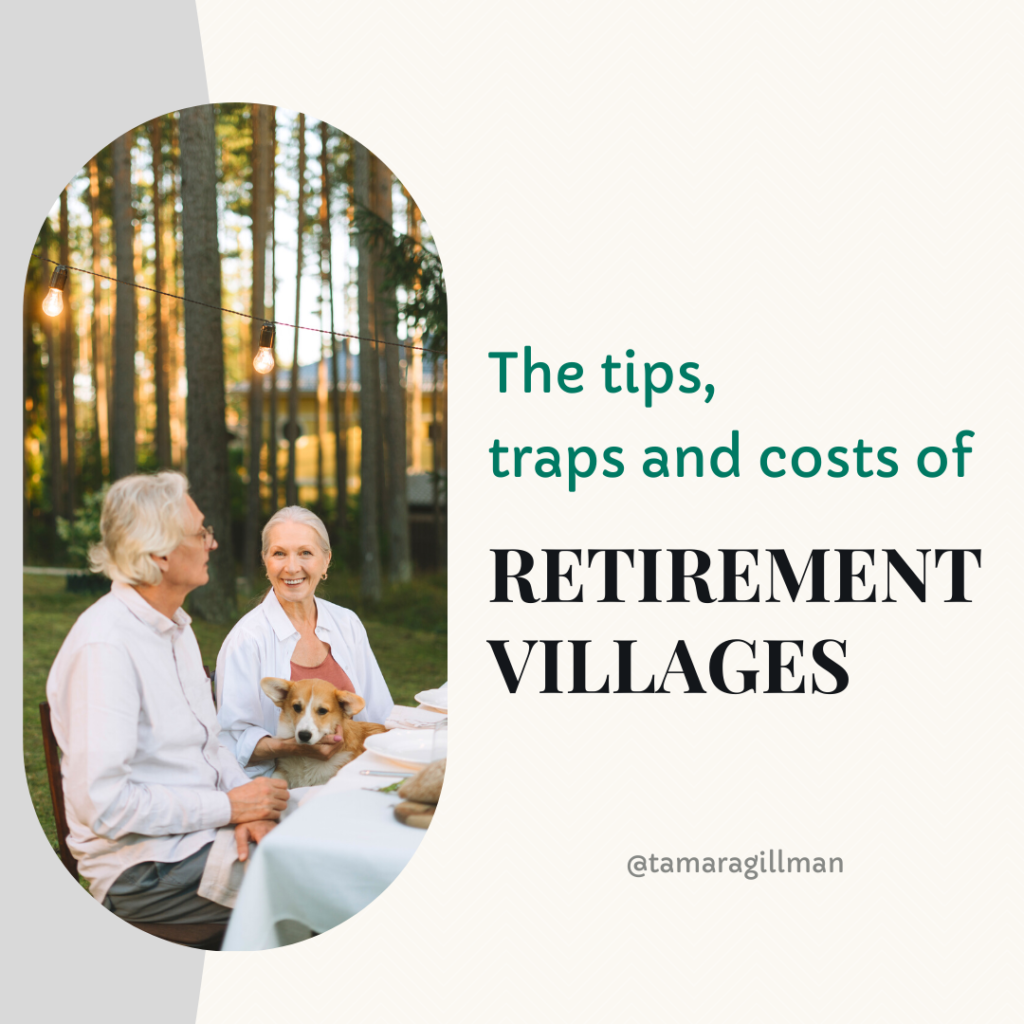
When I discuss a client’s retirement planning with them, one of the things that come up is the future option of downsizing their family homes and moving to a Retirement Village.
An increasing number of Australians are opting to live in retirement villages, and while pitched at the ‘over-55s’, the average age of entry is 74, and the average age of residents is 81.
Depending on the retirement village, attractions include having home maintenance taken care of, more social interaction, access to recreational and exercise facilities, and on-call assistance in case of a medical emergency. Moving to a retirement village can also free up capital to support living costs in retirement.
There are also several different types of ownership or occupation rights or ‘tenure’, and fees depend on the services and location of the retirement village, and your particular accommodation.
Most commonly, residents pay the market price of a unit in exchange for a long-term lease, or pay an upfront fee for a license to occupy. Straight rental arrangements, often for serviced apartment-style accommodation, are also available in some villages.
Understanding the cost:
While there are many ways in which retirement villages structure their fees, the most commonly encountered include:
- Waiting list fees.
- Ingoing contribution. This may be referred to as a refundable deposit, purchase price, or a loan, and will be the largest upfront payment.
- A regular (e.g. monthly) maintenance fee to cover the upkeep of facilities, pay staff and cover a range of services.
- Personal services fees for things like meals, laundry, and personal care.
- Utilities.
- Deferred management fee, or departure or exit fee, on leaving the village.
- A refurbishment fee.
- You or your beneficiaries may only get to keep a portion of any capital gain when departing the village.
Centrelink considerations
If your entry contribution is more than the extra allowable amount (the difference between non-homeowner and homeowner assets test threshold) Centrelink will classify you as a homeowner. This applies to most people. Anyone assessed as a non-homeowner may be eligible for rent assistance, with the amount based on the ongoing fees.
Major event
Moving house is a major and stressful life event at the best of times. With their varying fees and ownership structures, a move into a retirement village maybe even more complicated. That’s no reason to dismiss the idea – many retirement village residents report an increase in their happiness as a result of making the move.
However, entering a village has major financial consequences, so talk to your financial adviser about the financial impact on your own retirement planning.
